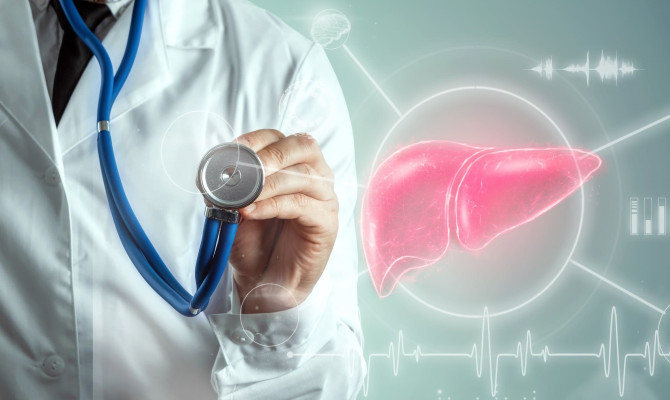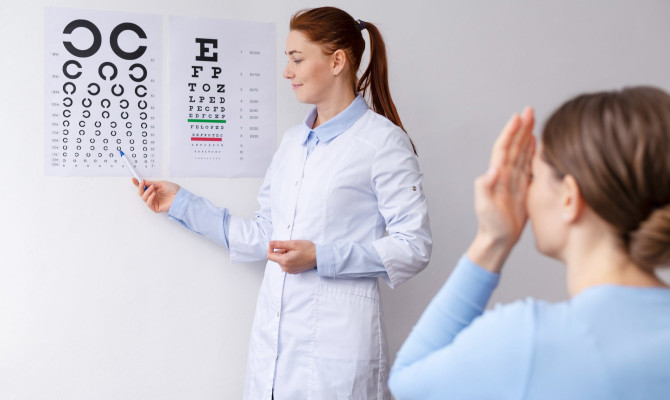Spondylosis Vs Spondylitis – Complete Overview

- Musculoskeletal Disorders
- 25 Sep 2023
Introduction
Spondylosis & Spondylitis
Spondylosis and spondylitis are disorders involving the spine but differ in significant ways.

This comprehensive guide will explore the intricate world of spine health to clarify what Spondylosis and Spondylitis are, how they affect the spine, their causes, symptoms, diagnosis, treatment options, and much more.
What is Spondylosis?
Spondylosis, or spinal osteoarthritis, is a degenerative condition that affects the spine. The spinal discs, vertebrae, and other structures are predominantly affected, along with other structures. The intervertebral discs that cushion our spinal vertebrae gradually lose moisture and elasticity becoming more brittle 1 Spondylosis | Researched based study from National Institutes of Health.
What is Spondylitis?
It is a broader term to describe various inflammatory conditions affecting the spine. The most well-known type is ankylosing spondylitis where inflammation of the spinal joints and ligaments is a characteristic feature. This condition often leads to the fusion of vertebrae over time, resulting in reduced mobility and an altered posture 3 Spondylitis| Researched based study from National Institutes of Health.
What are the two types of Spondylitis?
Ankylosing Spondylitis
- The sacroiliac joints, which attach the lower spine to the pelvis, are the main targets of this chronic inflammatory arthritis.
Arthritis psoriatic
- This type of inflammatory arthritis, which is characterized by red, scaly regions on the skin, may be experienced by psoriasis patients. It can involve the joints of the spine 4Types of Spondylitis| Researched based study from National Institutes of Health.
Purpose of comparison
The purpose of comparing both disorders is to clarify the distinctions between these spine-related conditions. They share some similarities and have different underlying causes and treatment approaches. Understanding these is crucial for healthcare professionals and anyone seeking to manage spinal health.
Symptoms

Symptoms of Spondylosis & Spondylitis
Common symptoms of Spondylosis
- Neck or back pain
- Stiffness
- Reduced range of motion
- Headache
- Numbness or tingling
- Muscle weakness
Here is a detailed information about the symptoms listed above:
Pain
- Chronic pain in the neck (cervical spondylosis) or lower back (lumbar spondylosis) are frequent symptoms. The pain may be dull and eating, and it can version with movement or prolonged periods of sitting or standing.
Stiffness
- It may be difficult to move the neck or back comfortably due to stiffness in the affected area. a smaller range of motion It could make it harder to fully extend the range of motion in the neck or back. This can affect daily activities.
Headache
- Headaches may accompany cervical spondylosis particularly at the base of the skull or in the back of the head.
Numbness
- It can occasionally compress spinal nerves, causing numbness or tingling to spread to the arms or legs.
Muscle weakness
- Advanced spondylosis may result in muscle weakness, particularly in the arms and legs as nerve compression affects muscle function 1Symptoms of Spondylosis| Researched based study from National Institutes of Health,2Symptoms of Spondylosis| Researched based study from National Institutes of Health.
Common symptoms of Spondylitis
- Chronic back pain
- Stiffness
- Reduce spinal mobility
- Pain and swelling in other joints
- Fatigue
- Eye inflammation
- Breathing difficulties
Here is a detailed information of the symptoms listed above:
Pain
- Spondylitis, especially ankylosing, is often characterized by persistent back pain. This pain typically works in the mornings and with prolonged inactivity.
Stiffness
- Spondylitis-related stiffness is a hallmark symptom. It tends to improve with movement and exercise but versions with rest.
Reduced spinal mobility
- As it progresses, it can significantly lose spinal flexibility, potentially causing a stooped or hunched-over posture.
Pain and swelling in other joints
- Some forms of spondylitis, like psoriatic arthritis, affect multiple joints. Symptoms may include joint pain, swelling, and stiffness not limited to the spine.
Fatigue
- People often experience fatigue, which can be attributed to both the chronic and inflammatory nature of the condition.
Eye inflammation
- Ankylosing spondylitis, in particular, can be associated with high inflammation, leading to symptoms like redness and light.
Breathing difficulties
- In severe cases of ankylosing spondylitis, the inflammation and fusion of spinal joints can affect the rib cage, leading to restricted chest expansion and breathing difficulties 3Symptoms of Spondylitis| Researched based study from National Institutes of Health.
Causes
Causes for Spondylosis & Spondylitis
Spondylosis Causes
Aging
- The primary reason is the natural aging process. we get older, the Intervertebral discs in the spine lose moisture and elasticity, making them more susceptible to wear and Tear.
Spinal degeneration
- Prolonged use, repetitive movements, and mechanical stress on the spine can contribute to the degeneration of spinal discs and vertebral leading to spondylosis.
Genetics
- There can be a genetic predisposition meaning that family members have experienced state you may be at a higher risk.
Lifestyle elements
- Smoking, obesity, bad posture, and a sedentary lifestyle are among lifestyle factors that can raise the risk.
Injury or trauma
- Sometimes, the progression of spondylosis might be accelerated by prior spinal trauma or accidents.
Occupational hazards
- Certain jobs that require a lot of hard lifting, frequent bending, or extended sitting may make you more susceptible 1Spondylosis Causes| Researched based study from National Institutes of Health,2Spondylosis Causes| Researched based study from National Institutes of Health.
Causes & Associated Risks of Spondylitis
Autoimmune response
- The primary reason for most types of spondylitis, including ankylosing spondylitis, is an immunological reaction. The immune system accidentally attacks the joints and ligaments of the spine, causing inflammation.
Genetic factors
- There is a solid genetic component, particularly in ankylosing spondylitis. Individuals with specific genetic markers like HLA-B27 are at a higher risk 8HLA-B27 Syndromes| Researched based study from National Institutes of Health.
Infections
- Some forms of spondylitis, such as reactive arthritis, can be triggered by infections, usually of the gastrointestinal and genital urinary tract.
Environmental factors
- Factors including smoking actions may contribute to the development or exacerbation of spondylitis in generally predisposed people.
Family history
- A higher risk can result from a family history of spondylitis or associated autoimmune diseases.
Gender
- Males experience ankylosing spondylitis more frequently than females 3Spondylitis Causes| Researched based study from National Institutes of Health.
Diagnosis
Diagnostic Methods for Spondylosis & Spondylitis
Medical history and physical exam results provide the diagnosis
- Usually, a physical examination and a detailed medical history are the first steps taken by medical specialists. Your symptoms, medical background, and risk factors will all be questioned.
Imaging studies
X-rays
- They are commonly used to visualize the spine bones and detect any irregularities, including bone spurs or adjustments to the spinal alignment.
- MRI (Magnetic Resonance Imaging) produces fine-grained images of the spine’s soft tissues. Including the intervertebral discs, which help identify disc degeneration and compressed nerves.
Computerized tomography (CT) scan
- It can provide a spine’s intricate cross-sectional imaging, providing more details regarding the bone architecture and potential nerve compression.
Electromyography
- It gauges how electrically active your muscles and nerves are. It can assist in figuring out whether nerve compression is to blame for numbness or muscle weakness.
Diagnostic injections
- These might be applied in some circumstances to pinpoint the cause of discomfort. For example, facet joint injection can help determine if pain originates from the facet joints in the spine.
Blood tests
HLA-B27 test
- This genetic marker test can help identify a predisposition to several spondylitis kinds, including ankylosing spondylitis 8HLA-B27 Syndromes| Researched based study from National Institutes of Health.
Erythrocyte sedimentation rate (ESR) and C-reactive protein (CRP)
- Elevated blood levels of certain markers can signify inflammation, which is common in spondylitis.
Bone scans
- In some cases, bone scans may be used to detect the areas of active inflammation in the spine or other joints.
Rheumatologist consultation
- Diagnosis and management of Spondylitis are often carried out by rheumatologist who specializes in autoimmune and inflammatory conditions 5Diagnosis of Spondylitis| Researched based study from National Institutes of Health,6Diagnosis of Spondylosis | Researched based study from National Institutes of Health.
Treatment
Treatment for Spondylosis & Spondylitis
The treatment of both conditions differs due to their distinct causes and characteristics. Here is a comparison of the general treatment approaches for each situation:
Spondylosis treatment:
- Non-surgical treatment
- Surgical treatment
Non-surgical treatment
Physical therapy
- It is often a mainstay in the treatment. therapist use exercises and techniques to improve mobility, strengthen muscles, and relieve pain.
Medications
- To treat pain and inflammation, doctors may give non-steroidal anti-inflammatory medicines (NSAIDs), muscle relaxants, and pain relievers.
Cold and heat therapy
- To relieve muscle spasms, use heat or cold packs and pain.
Ergonomic adjustments
- Making ergonomic changes in daily activities and workspaces can reduce strain on the spine.
Lifestyle modifications
- Weight management, regular exercise, eating, and smoking are recommended to maintain spine health.
Epidural steroid injections
- These can be considered for severe pain or nerve compression to reduce inflammation.
Surgical treatment (rare)
- Surgery is rarely necessary but may be considered in severe nerve compression or spinal instability cases. Procedures like spinal fusion or disc replacement could be options 6Diagnosis of Spondylosis| Researched based study from National Institutes of Health.
Treatment of Spondylitis:
- Non-Surgical treatment
- Surgical treatment
Non-surgical treatment:
Medications
- Non-steroidal anti-inflammatory drugs: They are commonly used to control pain and inflammation.
- Disease-modifying anti-rheumatic drugs (DMARDs): Sometimes like psoriatic arthritis may benefit from it, which modifies the immune system.
- Biologics: Biology medications can target specific inflammatory Pathways in autoimmune Spondylitis conditions.
- Physical therapy: may help reduce stiffness and maintain spinal flexibility while helping to enhance posture, mobility, and muscle strength.
- Lifestyle: A healthy lifestyle can improve general well-being by incorporating regular exercise and a well-balanced diet.
Surgery (rare)
- It is generally not a primary treatment. However, surgical options include fusion or joint replacement can be considered in severe cases of deformity or complications5Management of Spondylitis| Researched based study from National Institutes of Health.
Prevention
Prevention of Spondylosis & Spondylitis
Keep a good posture.
- Watch your posture when you’re standing, sitting, and lifting objects. It can help to use furniture and other items that are ergonomically constructed.
Stay physically active
- Regular exercise will help to develop your core muscle and support your spine. Yoga, walking, and other low-impact exercises can be helpful.
Weight management
- Keep your weight in check to lessen the strain on your spine. Spondylosis can develop and advance as a result of excess weight.
Avoid smoking
- Smoking can hasten the deterioration of spinal discs, so it’s best to stop or abstain from smoking.
Lift safely
- Use the right techniques when carrying large objects, such as bending at the knees and keeping the object close to your body.
A prompt response
- If you develop symptoms like back discomfort, stiffness, or joint pain, get medical attention. Early diagnosis and treatment can help manage the condition effectively.7Prevention| Researched based study from National Institutes of Health
FAQs
FAQs about Spondylosis & Spondylitis
Which is worse, Spondylosis or Spondylitis?
- The severity can vary significantly from person to person, and it is challenging to say which is worse because these conditions affect individuals differently.
Can you live an everyday life with Spondylosis?
- Yes, many individuals can live every day and fulfilling lives. Violet can cause symptoms like neck or back pain, stiffness, and reduced mobility. These can often be managed effectively with conservative treatments.
Any feedback on this article?
 This Articles content was accurate
This Articles content was accurate Very Informative Article
Very Informative Article I have a question or a comment
I have a question or a comment
 This article contains inaccurate content
This article contains inaccurate content This article was not helpful
This article was not helpful I have a question or a comment
I have a question or a comment
We appreciate your helpful feedback!
Checkout our social pages
References
-
National Institutes of Health
Spondylosis Causes & Symptoms
-
National Institutes of Health
Spondylosis Causes & Symptoms
-
National Institutes of Health
Spondylitis Causes & Symptoms
-
National Institutes of Health
Types of Spondylitis
-
National Institutes of Health
Diagnosis & Management of Spondylitis
-
National Institutes of Health
Diagnosis & Management of Spondylosis
-
National Institutes of Health
Prevention
-
National Institutes of Health
HLA-B27 Syndromes





































